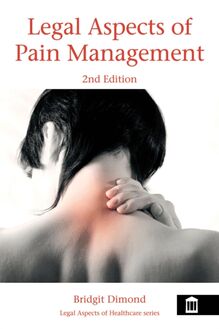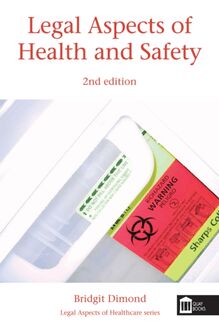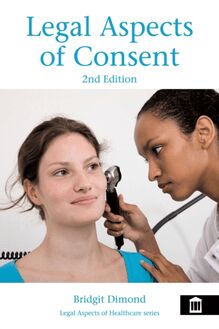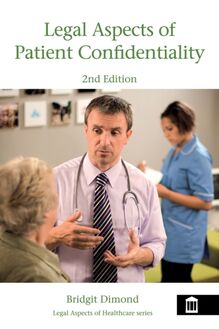-
 Univers
Univers
-
 Ebooks
Ebooks
-
 Livres audio
Livres audio
-
 Presse
Presse
-
 Podcasts
Podcasts
-
 BD
BD
-
 Documents
Documents
-
- Cours
- Révisions
- Ressources pédagogiques
- Sciences de l’éducation
- Manuels scolaires
- Langues
- Travaux de classe
- Annales de BEP
- Etudes supérieures
- Maternelle et primaire
- Fiches de lecture
- Orientation scolaire
- Méthodologie
- Corrigés de devoir
- Annales d’examens et concours
- Annales du bac
- Annales du brevet
- Rapports de stage
La lecture à portée de main
Vous pourrez modifier la taille du texte de cet ouvrage
Découvre YouScribe en t'inscrivant gratuitement
Je m'inscrisDécouvre YouScribe en t'inscrivant gratuitement
Je m'inscrisEn savoir plus
Vous pourrez modifier la taille du texte de cet ouvrage
En savoir plus

Description
Sujets
Informations
| Publié par | Andrews UK |
| Date de parution | 01 décembre 2014 |
| Nombre de lectures | 1 |
| EAN13 | 9781856424844 |
| Langue | English |
Informations légales : prix de location à la page 0,0850€. Cette information est donnée uniquement à titre indicatif conformément à la législation en vigueur.
Extrait
Title page
Legal Aspects of Consent
Second edition
BJN monograph
Legal Aspects of Health Care series
Bridgit Dimond
MA, LLB, DSA, AHSM, Barrister-at-law, Emeritus Professor of the University of Glamorgan
Publisher information
Quay Books Division, MA Healthcare Ltd, St Jude’s Church, Dulwich Road, London SE24 0PB
© MA Healthcare Limited 2009
All rights reserved. No part of this publication may be reproduced, stored in a retrieval system or transmitted in any form or by any means, electronic, mechanical, photocopying, recording or otherwise, without prior permission from the publishers
2014 digital version by Andrews UK Limited
www.andrewsuk.com
Note
Health and social care practice and knowledge are constantly changing and developing as new research and treatments, changes in procedures, drugs and equipment become available.
The authors, editor and publishers have, as far as is possible, taken care to confirm that the information complies with the latest standards of practice and legislation.
Foreword to the first edition
We lawyers are unpopular people and that is not surprising. We come along after the event and tell people what they should have done (or not done). This is particularly annoying for conscientious professionals who have to take sensitive and difficult decisions - about what to tell a patient, whether the patient is able to agree to or refuse treatment, whether he or she has in fact done so - in the heat of the moment. Much better if they have a clear idea of the legal principles and sensible guidance about how to apply them in advance. That is what Bridgit Dimond has set out to give you in this book.
But it goes further than that. The health care professions, the Department of Health and the NHS service providers are developing models of ‘good professional practice’ in this area. If there is clear professional guidance about what is good practice on a particular point, then a professional may have to justify departing from it in an individual case. It is harder to say that it was regarded as acceptable by a ‘responsible body of medical opinion’ (in the well known test laid down in Bolam v. Friern Hospital Management Committee [1957]). So the responsible professional needs to know what the guidance says as well as what the law says.
And on top of all that is the Human Rights Act 1998. The very essence of the European Convention on Human Rights is respect for human dignity and human freedom, as the European Court of Human Rights said in the case of Diane Pretty (the motor neurone disease sufferer who wanted her husband to be allowed to help her to commit suicide). The court also said that the notion of personal autonomy is an important principle underlying the right to respect for private life in Article 8. This does not mean that the patient’s wishes always prevail. But you need a book like this to tell you when they do and when they don’t.
Brenda Hale
December 2002
Preface to the first edition
Like the first book in this series, the law relating to patient confidentiality, this monograph follows the publication of a series of articles in the British Journal of Nursing on consent. The advantages of a book for health professionals setting out the law and practice on consent led to Quay Books agreeing that the articles, updated and revised, could form the basis of a concise publication covering the main concerns which arise in respecting the law relating to consent. Like the other books in this series, this is intended for all health professionals, health service managers and patient groups and their representatives. It aims to use a style which avoids legal jargon and by the use of illustrating situations or cases provides an easy guide to the law relating to consent. Since by far the majority of health professionals are women, she rather than he and her rather than his has been used for the registered practitioners whose role is considered in the following pages.
Many readers may not be acquainted with basic facts of the legal system and so these are briefly set out in the first chapter. It is hoped that this book, like the others in this series, will provide a succinct, useful basis from which practitioners and others can extend their knowledge of the law for the protection of their patients, their colleagues and themselves.
Bridgit Dimond
October 2002
Preface to the second edition
Since 2002, when the first edition of this book was published, there have been significant changes in the law relating to consent. The most important is the enactment and implementation of the Mental Capacity Act 2005, which provided a statutory framework for decision making on behalf of those adults lacking the requisite mental capacity to make specific decisions. This Act, along with other statutory changes, decided cases and new guidance from the DH and professional bodies, has led to major amendments to the first edition. It is hoped that this new edition will continue to provide a useful foundation on which health professionals can build their understanding of the laws relating to consent.
Bridgit Dimond
May 2009
Acknowledgements
I should like to thank all those many practitioners with whom I have come into contact through conferences and teaching who have raised with me the questions and issues which form the basis of this book. I am also indebted to the constant support and encouragement of my family and Bette, who once again prepared the index and tables of cases and statutes. Finally, I would like to acknowledge the advice, assistance and encouragement of Tessa Shellens over many years, and it is to Tessa that this book is dedicated.
Chapter 1: Sources of law and guidance
Introduction
This first chapter sets out the legal basis from which our laws of consent derive, and it also explains the provisions of the Human Rights Act 1998 and the legal system of the UK. The information is of necessity brief and readers may be interested in reading more detailed works set out in Further reading.
Source of law
Our laws derive from two principal sources: Acts of Parliament/statutory instruments (known as a statute or legislation) and decided cases. (See the Glossary for further explanations of legal terms.)
Legislation
Legislation, as well as consisting of Acts of Parliament (approval by the Houses of Commons and Lords and the Queen’s signature) would also include directives and regulations emanating from the European Community, which the UK as a member state is required to implement and obey (see below).
Legislation can be primary or secondary. Primary legislation consists of Acts of Parliament, known as Statutes, which come into force at a date set either in the initial Act of Parliament or a date subsequently fixed by order of a Minister (i.e. by Statutory Instrument). The date of enforcement is often later than the date on which it is passed by the two Houses of Parliament and signed by the Crown. The statute sometimes gives power to a Minister to enact more detailed laws, and these regulations are known as secondary legislation. Statutory Instruments which are quoted in the text are an example of this secondary legislation. Devolution has given to the different parts of the UK (Scotland, Wales and Northern Ireland) varying powers of lawmaking, and increasingly different statutory provisions are coming into force in these parts of the UK.
Common law, judge made law, case law
The other main source of law is the decisions of the courts. This source is known as case law, or judge made law or the common law. The courts form a hierarchy and the highest court in this country is the House of Lords. The courts lay down principles which must be followed by courts below that level, unless the decision can be distinguished on the basis that it is not relevant to the case before it. Thus if the House of Lords sets out a specific principle, known as a precedent, then this is binding on all courts in the country except itself (i.e. the House of Lords does not have to follow its own precedents).
In the case of Diane Pretty ( R. (On the application of Pretty) v. DPP [2001]), the House of Lords decided that her application (that her husband should be given an advanced immunity against any possible proceedings under the Suicide Act 1961 if he were to aid and abet her suicide), could not be granted. They did not find that her human rights as set out in the European Convention on Human Rights (see below) were breached by the Suicide Act 1961. She then applied to the European Court of Human Rights alleging a breach of her human rights but failed in her application ( Pretty v. United Kingdom (2002)). (The case is discussed further in Chapter 19.)
The decisions of the courts are reported so that lawyers and judges can refer to a specific case and the principles established by it. These principles are known as the ratio decidendi and can be applied to any matters in dispute. Judges might also make statements about wider matters that are not directly the subject of the case before them, and these statements are known as obiter dicta . These may be of persuasive authority and interest in subsequent cases, but they are not binding as precedents. If there is a dispute between a case and a statute the latter would take priority: judges have to follow an Act of Parliament. Thus in the Diane Pretty case, had the House of Lords thought that the Suicide Act 1961 was contrary to the European Convention on Human Rights (see below), then it could have referred this statute back to Parliament for review. (In practice, however, the House of Lords did not consider that there was any clash between the Suicide Act 1961 and the article
-
 Univers
Univers
-
 Ebooks
Ebooks
-
 Livres audio
Livres audio
-
 Presse
Presse
-
 Podcasts
Podcasts
-
 BD
BD
-
 Documents
Documents
-
Jeunesse
-
Littérature
-
Ressources professionnelles
-
Santé et bien-être
-
Savoirs
-
Education
-
Loisirs et hobbies
-
Art, musique et cinéma
-
Actualité et débat de société
-
Jeunesse
-
Littérature
-
Ressources professionnelles
-
Santé et bien-être
-
Savoirs
-
Education
-
Loisirs et hobbies
-
Art, musique et cinéma
-
Actualité et débat de société
-
Actualités
-
Lifestyle
-
Presse jeunesse
-
Presse professionnelle
-
Pratique
-
Presse sportive
-
Presse internationale
-
Culture & Médias
-
Action et Aventures
-
Science-fiction et Fantasy
-
Société
-
Jeunesse
-
Littérature
-
Ressources professionnelles
-
Santé et bien-être
-
Savoirs
-
Education
-
Loisirs et hobbies
-
Art, musique et cinéma
-
Actualité et débat de société
- Cours
- Révisions
- Ressources pédagogiques
- Sciences de l’éducation
- Manuels scolaires
- Langues
- Travaux de classe
- Annales de BEP
- Etudes supérieures
- Maternelle et primaire
- Fiches de lecture
- Orientation scolaire
- Méthodologie
- Corrigés de devoir
- Annales d’examens et concours
- Annales du bac
- Annales du brevet
- Rapports de stage









